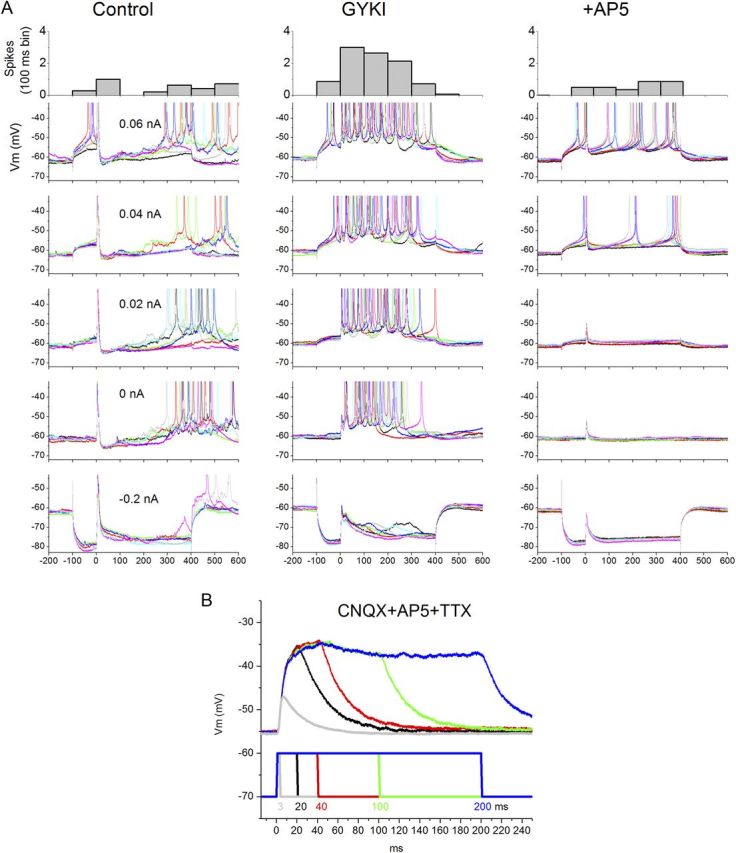Figure 5.

Effect of GYKI on intracortical responses evoked by high-intensity blue-light stimuli in Thy1-ChR2-line18 slices. A, Typical example from a cell recorded at different Vm levels set by intracellular current pulses (500 ms; blue light occurs 100 ms after current pulse onset). The high-intensity blue-light stimulus evokes a sharp short-latency response curtailed by a robust IPSP that can lead to a rebound excitation. GYKI strongly suppresses the short-latency response (but does not abolish it; see below), but at the same time it unmasks an up-state during the period where previously the IPSP was evoked. B, Subsequent application of d-AP5 completely abolishes the unmasked up-state, leaving intact a short-latency response caused by direct activation of ChR2 channels in this cortical cell; it survived block of glutamate receptors and Na+ channels. The blue-light duration is clearly reflected in the depolarization it causes, indicating that the cell expresses ChR2. In A (top), the number of spikes evoked by the depolarizing current pulses (> 0 nA) are calculated (100 ms bin). Note the unmasking of spikes during GYKI. The cell is cell10 reconstructed in Figure 3A.
